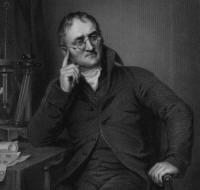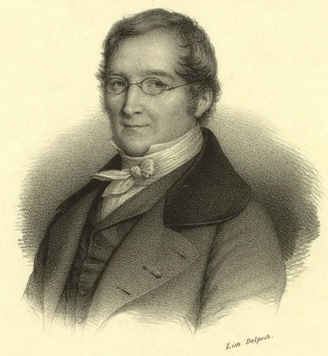|

John Dalton |
Dalton’s work with the different
elements allowed him to make generalizations that fit his
findings. Dalton called these rules of an “atomic theory”
which he proposed in the early 1800's based not only on his
discoveries, but scientists before him. The rules can be summed
up as follows:
-
Elements are composed of minute,
indivisible particles called atoms.
-
Atoms of the same element are
alike in mass and size.
-
Atoms cannot be created,
destroyed, or subdivided.
-
Chemical compounds
are formed by the union of two or more atoms of different
elements.
-
When atoms combine they do so in
simple numerical ratio.
-
Atoms of two elements may
combine in different ratios to form molecules.
|

Joseph Gay-Lussac |
Today some of his statements must
be modified: (1) atoms are composed of subatomic particles;
(2) all the atoms of a specific element do not have the same
mass; and (3) atoms under special circumstances can be
decomposed. Dalton also did not quite understand the concept of
bonding. He imagined that atoms simply were next to each
other. He did not theorize about a nucleus, protons, electrons,
and neutrons, which were discovered later.
A discovery by two friends, French
scientist Joseph Gay-Lussac (1778-1850) and German
naturalist Alexander von Humboldt (1769-1859) provided the
evidence that elements combined in a predictable way.
First, Gay-Lussac’s observed that the volume of gases, combined as
a ratio of whole numbers. Together with von Humboldt in 1805,
they found that water combined in simple proportions of oxygen to
hydrogen (8:1) by volume to form water. |